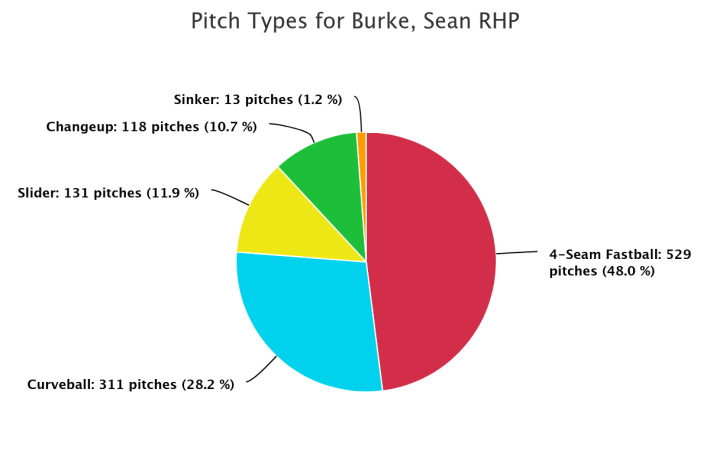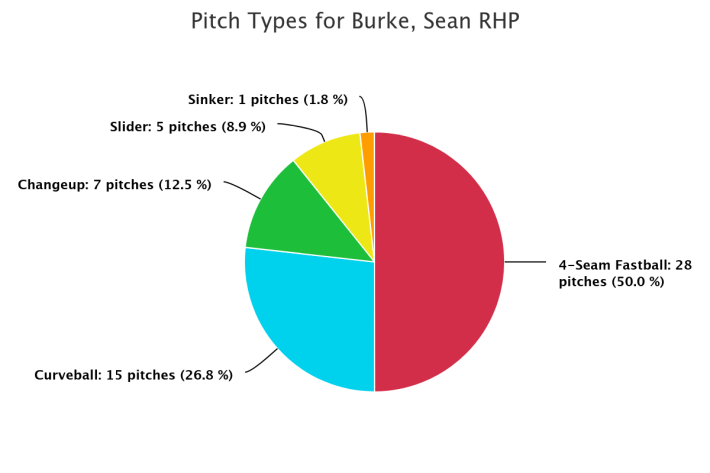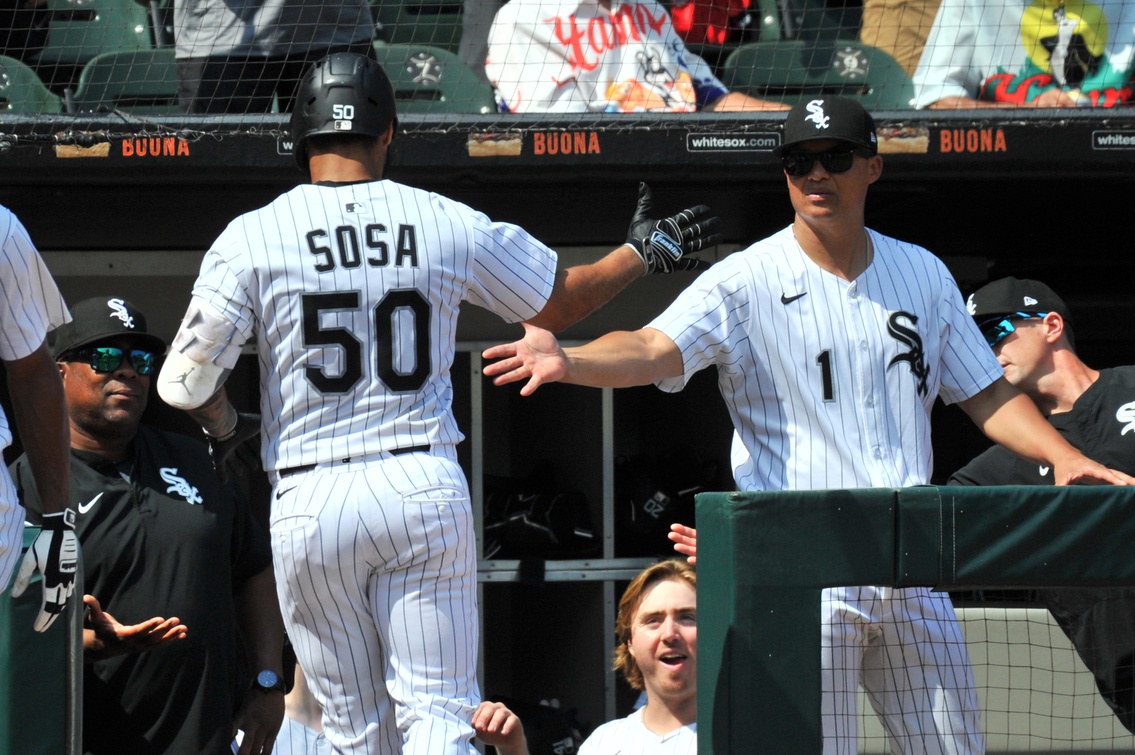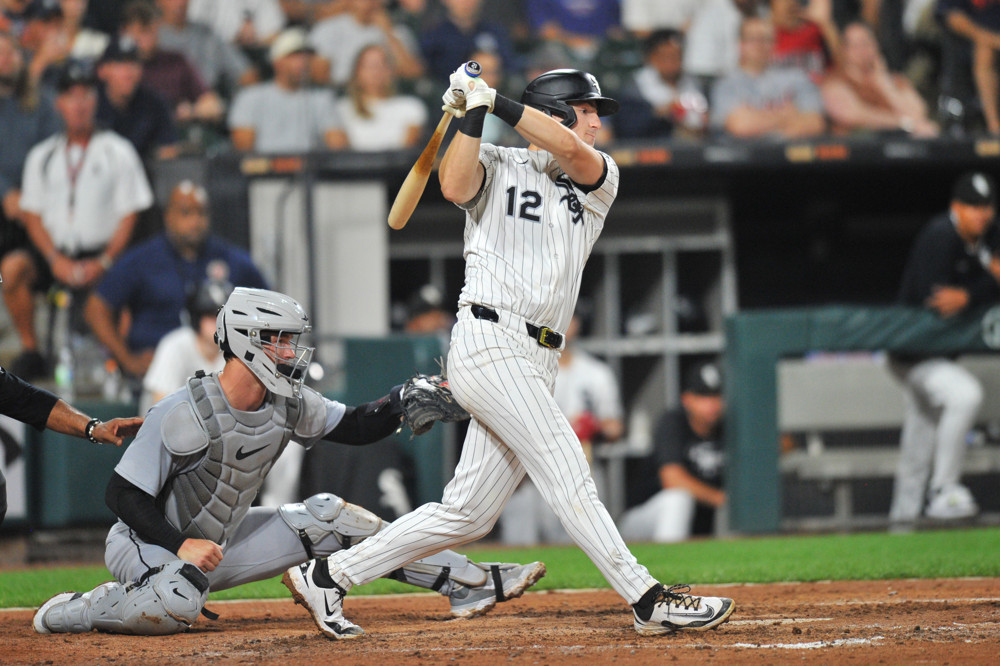NASHVILLE -- When Sean Burke pitched against the Nashville Sounds at First Horizon Park as member of the Charlotte Knights last year, he didn't make it out of the first inning. He walked five batters and plunked another back on July 24, throwing just 14 of his 37 pitches for strikes before then-manager Justin Jirschele came out to pull the plug.
"It's probably the worst start I've had since ... maybe my life," Burke said on Wednesday. It also represented the nadir of his season, as he rebounded well enough to earn a major league audition at the end of 2024, which he aced.
He then took that same mound in Nashville for Charlotte on Thursday. If you were paid to spin it positively, you could call the 1⅔ innings he threw a 133 percent improvement. If you have no such skin in the game, getting knocked out of the second inning in the second start of an unexpected demotion to Triple-A adds to the frustration of a season that's going in the wrong direction.
Burke was optioned to Charlotte on Aug. 18, 10 days after the White Sox did the same to Jonathan Cannon. Cannon pitched the day after Burke, and he also struggled, allowing five runs (four earned) on eight hits and three walks on 90 pitches dispersed over four innings.
Both were members of the Opening Day rotation, only to find themselves trying to avoid finishing the year in Triple-A. Neither was pleased by the turn of events, but both have accepted the shift.
"I was disappointed, but I wasn't too surprised," Cannon said. "At the end of the day, to stay in that league you have to perform well and I wasn't performing very well."
"I was just frustrated, but [there are] some things I can do better that I just want to work on here," said Burke.
Indeed, their performances had left a lot to be desired. Cannon had given up 19 runs over his last 12 innings in his three starts before the demotion, including a disastrous turn against the Mariners in which he gave up seven runs over 1⅔ innings. Burke had skirted complete cave-ins, but he completed five innings in just one of his last five games while averaging well over 20 pitches per inning, so while he kept his team in the game, the repeated brevity of his starts risked wearing down the bullpen.
It's easy to identify the problem. The solutions are trickier to manifest, especially since the proposed paths aren't breaking new ground.
When the White Sox took Colson Montgomery out of circulation for his reset in Arizona, he and Ryan Fuller explored all sorts of swing changes. He returned to action -- and eventually ascended to the majors -- looking largely like his old self, but that wasn't necessarily the plan.
In this case, neither pitcher will be undergoing a similar mechanical breakdown.
"They're both in a very good spot delivery[-wise]," said pitching coordinator Matt Zaleski, who was with the Knights in Nashville last week. "It comes down to execution and the [pitch] usages for them."
For Cannon, at least the path forward sounds agreed upon. It wasn't the first time he suggested it, but most recently in the wake of Cannon's departure on Aug. 24, Ethan Katz said that Cannon needed to run cutters up and in to lefties to set up the changeup away, which Cannon reiterated in Nashville. He also said the inverse is true -- when he's not throwing competitive changeups, as he said he struggled to in that three-start stretch, his attempts to come inside look especially juicy.
"The flip side is when I'm not executing the changeup, they're able to look in and be ready for the fastball, and so it's tougher to get in on them when they're looking fastball," Cannon said. "By respecting the changeup, you kind of open that window up and then put a cutter for whatever it may be. And so then it just kind of has that cause-and-effect, whereas when you're able to get in, you're also able to also get the change down and away and get more swings at it."
Burke's directions are a little murkier. Back during that Aug. 24 media session, Katz said Burke had become "a little bit fastball-curveball heavy with the lefties," and Triple-A gave him a venue for exercising his changeup and slider without grave consequences. It's not something anybody in Nashville disagreed with, but the emphasis was more on improved execution of Burke's bread and butter.
"I don't think my usages are that much different, just kind of the execution and command of those pitches and then making sure I'm setting them up well," Burke said. "It's more of a consistency thing, and just being a little sharper. I don't think I need to make too many huge adjustments. It's just some small things that are going to shave more pitches off or create more weak contact early."
"He's done a good job with four-seam/curveball to lefties throughout his career," Zaleski said of Burke. "It's not trying to reinvent, it's just getting more fine-tuned with it."
Sure enough, the usage of Burke's arsenal against lefties is fairly close to what he'd been doing in the majors.


While the minor leagues provide a lower-pressure environment, the nature of Triple-A lineups means it might not serve as a real staging ground. Beyond the talent gap, International League managers aren't nearly as concerned about platoon advantages, so only 37 percent of Burke's pitches have been to lefties, versus 53 percent in the majors.
The differences are distinct enough to make success difficult to project, and it makes for awkward conversations when the minor league starts resemble the MLB ones (the Sounds fouled off 18 of Burke's 62 pitches, so even they were able to ramp up his pitch count).
On the same day Burke and Cannon spoke to your local White Sox news and analysis concern, Chris Getz talked to reporters about the thought process behind removing players from their current level, even if it comes off as extreme:
"I do believe that we've got the right systems in place, the right people and the willingness and confidence to put a plan together and getting player buy-in to go out there to hopefully execute, which we've had some success. I think there's so many different ways to develop players. Sometimes guys make their big jump in the offseason, therefore you see it in the following season. Sometimes it's an in-season adjustment, and sometimes you just get them out of competition in-season and we've shown that a couple times and some players have taken steps forward. So it's definitely baked into our development model, and it's almost a little surprising that more teams aren't as proactive on it. But we've got the willingness, we've got the people to go out there and put the plan together and the players can go out there and execute in a better fashion."
When viewed in relation to Montgomery's rebound, that quote reads like a deserved victory lap, but this explanation approaches premature self-congratulations when considering Cannon and Burke. It also applies to Jairo Iriarte, who was last seen walking three of the four batters he faced for Charlotte on Sunday, the latest dud in a season that's getting away from him despite an Arizona sabbatical earlier in the year.
Or perhaps it's less about expressing egos and more about protecting them. You hear a lot about interventions, adjustments and resets, but when players are sent down to the minors and the instructions can be boiled down to "do what you're already doing, but better," isn't that just a demotion?
Probably, but more direct description in the face of unimpressive Triple-A performances would invite questions about whether Burke and Cannon are capable of getting it done with their current approaches, or in their current roles. The euphemistic spin makes it a little easier to delay the difficult public conversations until the offseason.






